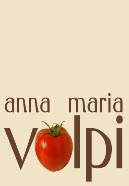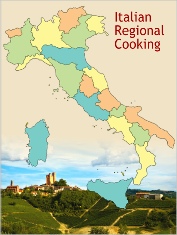













JOIN NOW
our Italian Cooking
Newsletter

Publication or use of pictures, recipes, articles, or any other material form my Web site, on or off-line without written permission from the author is prohibited. If you would like to use my articles on your Web site or in your publication, contact me for details. Avoid infringing copyright law and its consequences: read the article 7 Online Copyright Myths by Judith Kallos
Copyright © 2003 - 2011 Anna Maria Volpi - All Rights reserved.
Anna Maria's Open Kitchen Site Map







Some More Hot Topics You'd Like to See adv.




In 1533, at age fourteen, she was married to Henry of Orléans, the future king of France. Her life was difficult because, from the beginning, Caterina was not what Henry expected. She was chubby, had a big nose and the round eyes typical of all the Medici. Henry married her only for political reasons. In a short while, he betrayed her with a beautiful and older lady, Diana de Poitiers. This was a humiliating relationship Caterina couldn’t ignore.
Unpopular with the French people, Caterina was called the Italian “grocer” because she was from a rich family of bankers and not of noble blood progeny. In addition, she was expected to give an heir to the crown of France. For years the couple tried in vain. With her marriage in jeopardy, she feared being repudiated and sent back to Italy.
The superstition of that time induced Caterina to try to become pregnant by any expedient from special dishes believed to help. These included artichokes, cibreo (chicken gizzards), and disgusting potions of all kinds. Finally, after ten years, a renowned physician at the Louvre diagnosed the two partners with congenital anomalies. Simple remedies finally allowed her to give birth to nine children over the next eleven years, four of them future kings and queens.

[...] Catherine began feeling insecure in regards to facing the "splendid" French Court. In desperation, she sought the aid of an ingenious Florentine artisan. [...] He removed the clunky wooden soles from Catherine's shoes and replaced it with a slender padded four-inch heel. [...] As necessity is the mother of invention, Catherine de Medici is the mother of the modern high-heeled shoe.

[...] Catherine is also known as the person who started Ballet through her love for dancing and brought many famous Italian dance masters to France and throwing grand Spectacles of Court. Around 1530, Aglio, the Count of Savoy prepared and acted Ballets with the Princes and Princesses of his Court. The main experiment in Ballet came from the court of France when Catherine de Medici (1519-1589) along with Henry II (r.1547-1559) brought a dance master in from Italy by the name of Baitazarini. On 10/15/1581, Catherine would hold the first Ballet called the "Ballet Comique de la Reine," for the Duc de Joyeux's marriage. A violinist named Beujoyeux who would later become the Valet De Chambre (dance master) designed this Ballet.
Catherine unwittingly had vast influence on fashion for the next 350 years when she enforced a ban on thick waists at court attendance during the 1550’s. For nearly 350 years, women's primary means of support was the corset, with laces and stays made of whalebone or metal. They forcefully shrank women's waists from their natural dimensions to as little as 43, 38, or even fewer centimeters (17, 15, or fewer inches).

In her taste for art and her love of magnificence and luxury, Catherine was a true Medici. Her banquets at the Royal Palace of Fontainebleau in 1564 were famous for their sumptuousness. In architecture, especially, she was well versed, and Philibert de l'Orme (Philibert of the Elm) relates that she discussed with him the plan and decoration of her palace of the Tuileries.
Caterina also brought with her to the French table new protocol, such as the separation of salty and sweet dishes, at a time when sweets were still consumed together with meat and fish in the medieval style all over Europe. Everyone in France was amazed by the Florentine elegance Caterina introduced, including gracious table setting and dining, embroidery and handkerchiefs, light perfumes and fine lingerie, as well as luxurious silverware and glasses.
At the time, French cooking was already a rich, evolving discipline, and the presence of the new style profoundly influenced French cuisine over the next centuries. Jean Orieux wrote that “It was exactly a Florentine who reformed the antique French cooking of medieval tradition; and was reborn as the modern French cooking.” French cooks improved and magnified the Florentine contribution. While many dishes and techniques were being forgotten in Italy, the French made them into international cuisine.
Although great effort have been made to discredit her historically, Caterina’s influence over French society can’t be denied.
Anna Maria Volpi
© Anna Maria Volpi

Diana de Poitiers, the courtesan lover of king Henry II
Caterina de’ Medici Queen of France,
1519-1589

Caterina de’ Medici
A Tuscan Queen
in France
An important figure of the Renaissance, Caterina de’ Medici (niece of Lorenzo) unwillingly
became one of the most influential people in culinary history.
Only after the death of Henry was she able to get rid of the intruding presence of
Diana, as well as to affirm her abilities as a strong ruler and wise politician—even
in the midst of the turbulent and bloody events that took place in the years that
followed.
When she moved to France, a crowd of friends, servants, and waiters accompanied her.
The Florentine cooks who went with her brought the secrets of Italian cooking to
France, including peas, beans, artichokes, duck in orange (canard a l’orange), and
carabaccia (onion soup). The pastry makers, as Jean Orieux (a biographer of Caterina)
wrote, especially demonstrated their innovative genius with sorbets and ice creams,
marmalades, fruits in syrup, pastry making, and pasta. A certain Sir Frangipani gave
his name to the custard and the tart known in France as Frangipane.

All the Tuscan Dishes
Featured in Anna Maria’s Open Kitchen

The Food of Enchanted Tuscany























